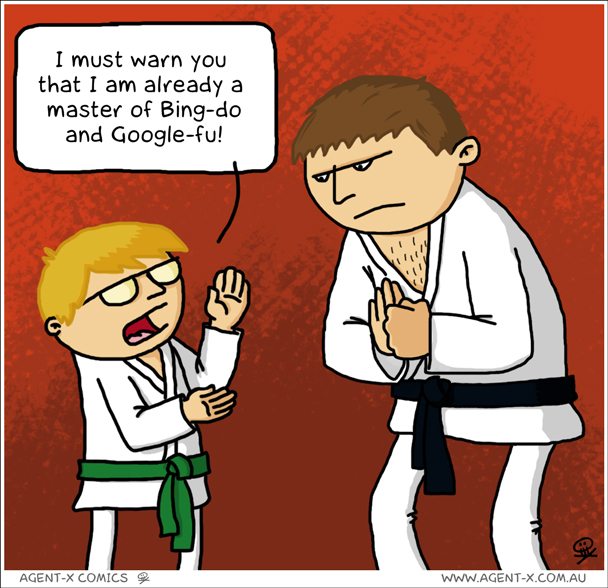 |
| Card Catalog - My Original Google |
I personally believe that everything is interconnected. All you have to do is look. Over the years, my networks have changed as I
have learned new skills, added new technologies, met new people, and have had
new experiences. Each new experience
creates new connections that can be explored.
I am fortunate that I was taught originally to do research using the
card catalog, the Dewey Decimal System, microfiche, and microfilm. I have gone through thousands of cards in the
subject listing of a card catalog. I
have searched microfiche and microfilm records. In addition, I have wandered
the wonderful world of the Dewey Decimal System. Each card and piece of film offered new
opportunities to add to my ever-growing network of information. I believe that these early lessons in
research have allowed me to find connections and add nodes to my networks as
needed.
 |
| Beware the Master |
George Siemens (2005) wrote, “… technology has reorganized
how we live, how we communicate, and how we learn (Introduction, para. 1)” As access to digital information became more
prevalent, I learned new research techniques. As part of a personal project, I discovered I needed access to an 18th
Century French book by Jean-Baptiste Alliette. Using the skills I have learned on
researching, aka Google Fu, I was able to find a scanned copy at La Bibliothèque Nationale de France. I
now have a new node in my network that would not have been possible without the
interconnectivity provided by technology.
As an explanation of how information is cataloged and accessed,
I think that connectivism is very apt. However,
I find myself in agreement with the assessment of Professor Pløn Verhagen who “believes
connectivism to be relevant on a curricular level as it speaks to what people
should learn and the skills they should develop” (Davis,
Edmunds, & Kelly-Bateman, 2008, Critics of
Connectivism, para. 1). Learning to
culture and develop nodes in one’s network as well as the “ability to see
connections between fields, ideas, and concepts is a core skill” (Siemens, Connectivism, para. 3).
 |
Finding Your Way To New Places, or
Learning How to Read the Sign |
This is something I stress to my students: You do not necessarily need
to know everything, but you must know where to find the information you
need. This is supported by Siemen’s assertion that “Know-how
and know-what is being supplemented with know-where (the understanding of where
to find knowledge needed)” (Introduction, para. 3). Nevertheless,
I do not assume that students have this skill and as such, I cannot accept connectivism
is a learning theory that describes the process of how people learn, but rather
see it as a skill that can be taught to students to help facilitate learning.
References & Attributions
Davis, C., Edmunds, E.,
& Kelly-Bateman, V. (2008). Connectivism. (M. Orey, Editor) Retrieved
November 11, 2013, from Emerging perspectives on learning, teaching, and
technology
Card Catalog: By
Michael Holley Swtpc6800 (Own work) [Public domain], via Wikimedia Commons
Road Sign: By Dyon
Joël (Own work) [Public domain], via Wikimedia Commons


No comments:
Post a Comment